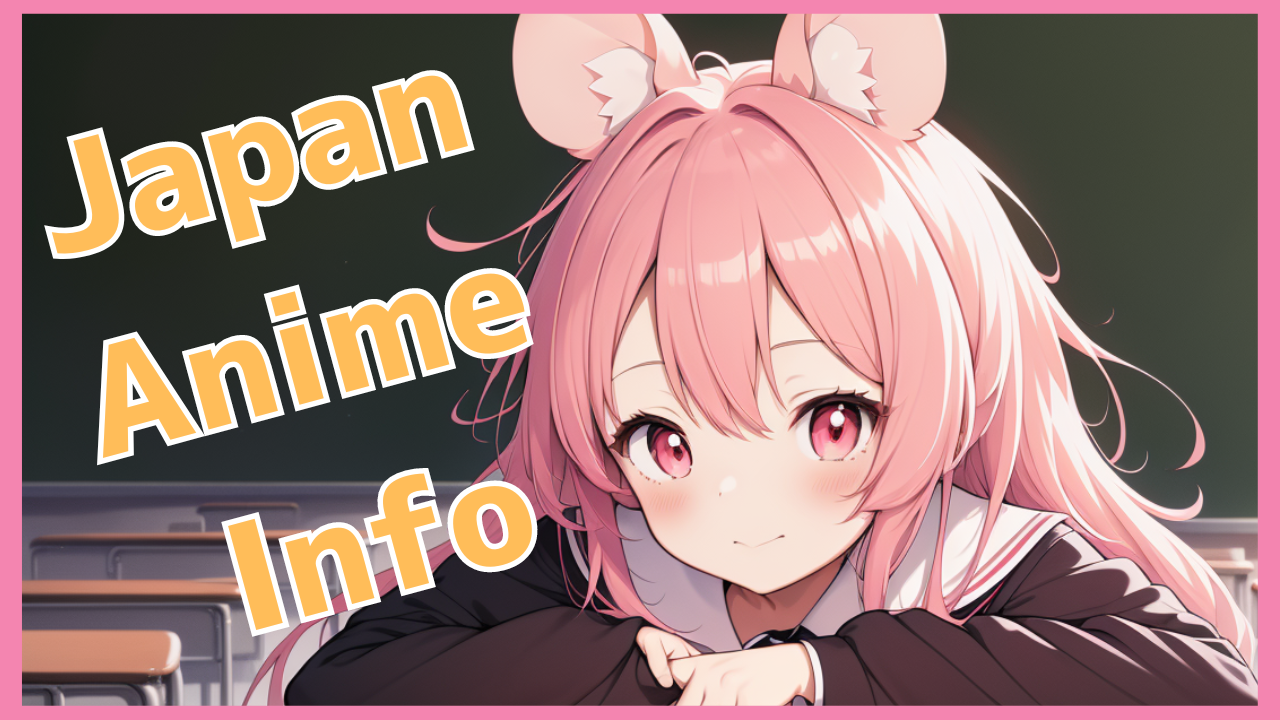A seminar for the “Animation Overseas Expansion Step-Up Program” aimed at anime-related companies and individuals in Tokyo was held on October 10th.
The program is being held as part of the “Tokyo Anime Business Accelerator,” a project that supports people involved in the animation industry who are aiming to expand overseas. It consists of seminars and workshops and a pitch grand prix, where participants learn the pitch skills that are essential when selling their plans and works overseas before participating in the contest. Winners will receive a cash prize and an opportunity to exhibit at MIFA (Marché international du film d’animation), the world’s largest animation trade fair.
To participate in the pitch contest, participants had to attend at least one of the six sessions, consisting of four seminars and two workshops . The first session was held under the theme ” Learn about animation film festivals and overseas markets .”
The seminar was in two parts, with anime journalist Kazudo Naoshi giving a presentation in the first half about the state of the overseas market and trends in Japanese animation.
Currently, the Japanese anime market continues to expand, mainly in overseas markets, with overseas sales accounting for roughly half of the total market . The overseas market has grown six-fold in ten years, a result of the increased awareness of anime due to the distribution market. In recent years, Japanese companies, particularly major ones, have been expanding their businesses locally. The proportion of overseas sales for anime production studios is also growing, suggesting that not only are works being produced, but production companies are also expanding overseas.
However, connections and relationships are important in overseas business transactions, and the barriers to entry are not low for those considering new ventures. That is why participating in international trade fairs (markets) is important.
Currently, the trend in the film industry is for major international film festivals to host markets in conjunction with them. The world’s largest animation film festival, the Annecy International Animated Film Festival, hosts the aforementioned MIFA market, which is currently the world’s largest market specializing in animation.
There are other markets that trade animation, but many of them deal with all types of video works, including live-action films. Meanwhile, all participants at MIFA are involved in animation, making it easy to find potential business partners.
The market is made up of booths from companies and organizations, pitch sessions, networking opportunities including parties, business seminars and workshops, etc. Participation by countries is becoming more prominent at the booths, and Tokyo also has a booth at MIFA, but perhaps due to the brand power of Japanese anime, it seems to have a certain presence.
There are various “pitch” sessions where each project is presented, depending on the theme and progress, such as those in the early planning stages or those close to completing fundraising, and in some cases, if you win a pitch contest, you can receive investment. The benefits of participating in the market include being able to show your plan to many people and get feedback, expanding your network, and understanding global trends. However, it has been pointed out that the number of participants has increased too much in recent years, leading to saturation .
This year, MIFA recorded the highest number of registered attendees ever, and the event is becoming more international. Kazudo, who has visited MIFA several times, says that he feels that the most recent trend is the momentum of the Asian region . MIFA’s expansion is supported by the growth of the global animation market itself, which suggests that the demand for animation is increasing around the world and competition is intensifying. In other words, it is not only Japan that is experiencing significant market growth .
Among them, the strength of Japanese anime is the brand power of being an animation powerhouse and having fans all over the world. There are many producers who want to approach these loyal fans. On the other hand, the weakness is that Japan’s unique business practices can sometimes be difficult to understand due to a cultural gap, and there are also cases where communication problems cause stumbling blocks.
In addition, a recent trend in the global animation market is that while children’s and family-oriented works are still strong, the adult market is growing into a huge market for the masses . Anime is changing from being for enthusiasts to being for the masses, and countries other than Japan are starting to produce works in this genre (such as “Arcane” and “Spider-Man: Into the Spider-Verse”).
The second half of the event was a conversation between Kazudo and Taka Kato of Studio Selfish, who actually participated in MIFA with the support of this program. Kato is a designer and illustrator, but he also directs animation works for children on NHK Educational TV and other channels.
加藤氏は、個人で2016年に『Laidback Lu』という短編企画をMIFAに応募したが落選。だが、その後本プログラムのピッチコンテストで受賞し、MIFAへ参加することになった。2019年には『Maggy’s Mission』、2022年にも『Sunny Side Ups』という企画を持ち込み、同マーケットに参加しているという。
加藤氏は、MIFAでピッチをするとたくさんの人が握手を求めて感想を言ってくれることに感動したという。そして、実際にどこが良くて、改善点がどこにあるのか、具体的なフィードバックを伝えてくれるのだそうだ。
企画を売り込む際にトレイラーなどの映像があった方がいいのかとの質問には、やはり実際に映像を見せながら説明した方が伝わりやすくフィードバックも得やすいと語る。映像についてはコンセプトアートをつなげた程度のものでも効果的で、雰囲気がわかればいいのだそうだ。また、イラストやキャラクターデザイン表のほか、Tシャツなどグッズのイメージも自分で作り、グッズ展開も想定している点も伝えていたとのこと。
企画の取引自体は、様々なケースがある。自分で作品を作りきってから売る場合もあれば、コンセプトを買ってもらい、制作は別の会社で行うという場合もある。クライアントからの提案にも応えられるように、企画を紹介する時には自分がやりたいことは監督なのか、コンセプトアートなのかなど、どこまでを自分でやる想定なのかを決めておくといいという。条件によっても対応は変わるだろうが、どこまでなら、譲歩可能かもあらかじめ決めておいた方がいいということだ。
続いて、企画をどうビジネスにしていくのかという質問について、加藤氏は何度もマーケット等のビジネスの場に参加する重要性を挙げた。毎年、MIFAに参加すると顔なじみができるので、前回感触が良かった人に改めて今回の感想を聞いたり、そこから新たな人を紹介してもらったりと一度繋がった縁を年々深めていっているという。また、企画の話をする時にはストーリーをメインに話しがちだが、どんなバリュー(価値)があるのかを重要視されることが多いのだという。予算や制作期間を質問されることもあるので、ある程度の概算に幅を持たせて考えておく必要もあるとのことだ。
実際に加藤氏の仕事につながった話として、2016年のピッチを見たプロデューサーがブースに来て、オリジナルの企画「Rocco」を開発することになったのだという。3カ月程度で企画を立てたそうだが、企画段階でも予算をくれたそうで、サンプルシナリオから動画コンテまでを1年かけて制作。30話分の製作が決まりFOXの子会社「Baby TV」で放送された。制作中は、当時はまだ日本で主流ではなかった4Kで納品せねばならないといった指示があるなど、日本での常識が通用しない場面があったり、予算の課題もあったりしたそうだが、(FOXがディズニーに買収された影響もあり)作品がディズニー+で世界配信されるなど、本作での挑戦が今後に繋がるきっかけになったという。
加藤氏は、東京都の支援プログラムに参加して企画の立て方がわかるようになり、国内のコンペでも勝てるようになっていったそうだ。ピッチグランプリは、無料で自分の企画の弱みと強みを知ることができて有益だったという。また、MIFAに参加して世界中でアニメーション制作者と出会うことは、モチベーションの維持になっているそうだ。
「アニメーション海外進出ステップアッププログラム」のセミナーは、全4回の実施を予定している。またセミナーの他にはワークショップを2回開催予定でそのいずれかに参加した人がピッチグランプリに応募できる。グランプリの最優秀賞者には賞金100万円、優秀賞者には50万円が交付され、最優秀者と優秀者の合計5組程度がMIFA2025の出展支援を受けられる。渡航費、ブース出展費等は東京都が負担し、出展前にマッチングのアポイントも事務局側で行う。
応募対象となるのは、東京都内に登記している中小企業社、または都内税務署に開業届を出している個人事業主となる。詳しくは公式サイトで確認してほしい。


コメント